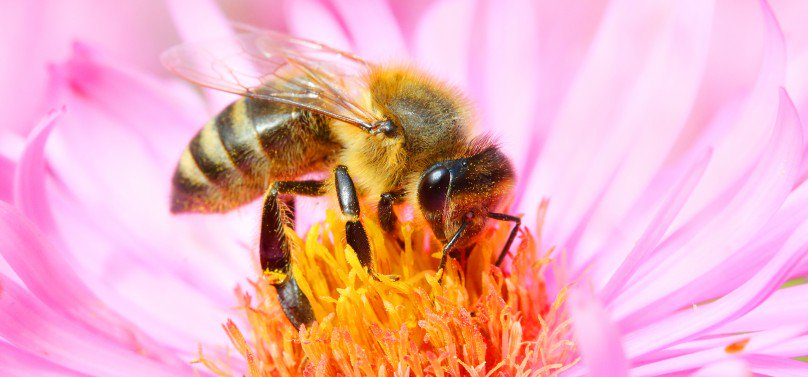Update: As of April 22, 2019, Green Tourism Canada is now Sustainable Tourism.
August 17 is World Honey Bee Day, a day to raise awareness about our dependence on the work honey bees do to ensure a healthy and sustainable food system. It is estimated that bees are responsible for about one in every three bites of food taken in North America! Wow!
Although the day of celebration was started by a group of beekeepers in the USA in 2009, World Honey Bee Day has become a global affair, drawing attention to the fact that during the last decade, honey bee populations in Canada and across the globe have heavily declined. There are several different reasons for this dramatic decline; diseases and parasites are a contributing factor, but others such as agricultural practices may be the main reason for the recent rapid decrease. The use of insecticides like Neonicotinoids, which affects the nervous system of invertebrates, was found in 70% of the dead bees tested by Health Canada in a 2012 report. Growing genetically modified crops and the trend towards monoculture is also associated with the loss of bees’ habitat and natural food sources.
What can we do to stop the decline of the honey bees here in Canada? Here are five ways your tourism business can help our little friends, and get your guests buzzing about your tourism business:
- Buy local, organically grown food whenever possible. Purchasing locally will give you the opportunity to ask the farmer how he operates to ensure no toxic pesticides have been used to grow the products. Purchasing locally will not only assure you where your food comes from and how your food has been produced, but you’ll also be supporting your community and contribute to a sustainable economy. If you can’t purchase what you need from a local organic or spray-free farmer, organic certification is your guarantee that no bee-unfriendly sprays were used in the production of your food.
- Get out your green thumb and use bee-friendly flowers and herbs, such as lavender, sage and mint, in your landscaping. You will help boost bees’ declining habitat and food sources, and eliminate areas with toxic chemicals. Plus, many bee-friendly flowers are beautiful and drought tolerant. Check out the David Suzuki Foundation’s guide to creating a Bee Friendly Garden.
- Learn how to be a beekeeper like Danielle Bradford from Green Tourism Gold member, Bear Claw Lodge in Kispiox River. Last year they introduced the bees to their new home at the lodge after Danielle took a beekeeping course put on by the Upper Skeena Development Centre and learned everything about taking home bees and how to house them. If beekeeping seems a little too adventurous for you, putting up a bee hotel could be a great alternative. Click here to see how it works.
- Showing your support by visiting attractions like Green Tourism Silver member, Planet Bee Honey Farm & Honeymoon Meadery in Vernon to boost your knowledge about where bees live and how they work. This will help you appreciate how much effort it takes to produce a jar of honey and how close they are connected to nature. And who can say no to taste-testing delicious honey and mead?
- Create a pollinator hotel like Green Tourism Gold member, Fairmont Waterfront, and their “Bee and Bee Pollinator Hotel.“ While honeybees don’t use these, you can attract a wide variety of native bee species, such as mason bees, and other pollinators that are critical to supporting a sustainable food system.
